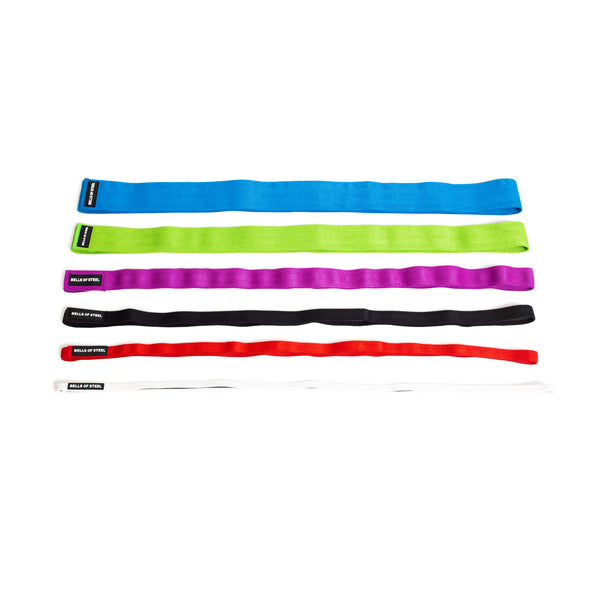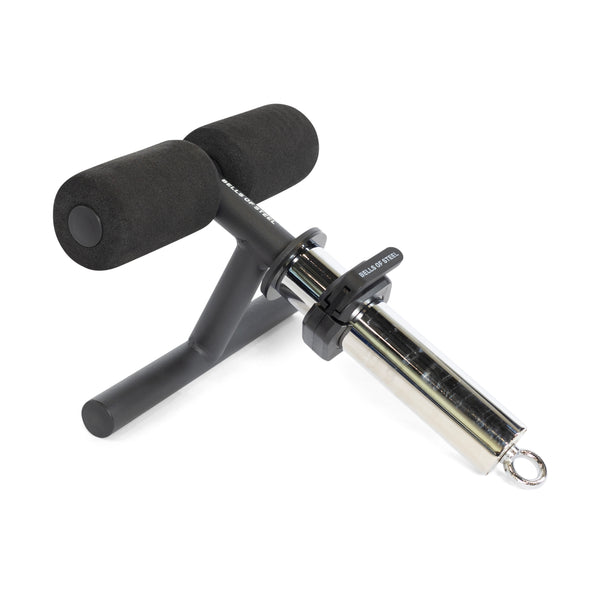Whether you're an athlete seeking peak performance or a fitness enthusiast aiming for injury prevention, learning to use a Tib Bar effectively can transform your lower-body training.
In this guide, we’ll walk you through performing the tibialis raise with a Tib Bar, then discuss the advantages and disadvantages of this tool.
What is a Tibialis Raise?
The tibialis raise is a powerful exercise targeting the tibialis anterior muscle, which runs along the front of your shin. This often-overlooked muscle is critical in ankle stability, knee health, and overall lower-leg performance.
If you have a Tibialis Machine instead of a tib bar, check out How To Do a Tibialis Raise: Go From Beginner to Tib Raise Master for detailed instructions.
How To Use a Tib Bar
Follow these simple steps to master the tibialis raise with your Tib Bar:
1. Set Up the Tib Bar
Load the Tib Bar with weight plates, resistance bands, or attach it to a cable machine for varied resistance. The Bells of Steel Tibialis Trainer Bar accommodates all these options for versatile training.
2. Secure Your Feet
Insert your feet into the ankle pads, ensuring they’re snug but not overly tight. Your toes should be free to move.
3. Position Yourself
Sit on a sturdy bench with your feet hanging slightly off the edge. Your knees should be bent at approximately 90 degrees.
4. Start the Movement
Slowly flex your feet upwards (dorsiflexion), pulling your toes toward your shins. Hold the contraction at the top for 1-2 seconds.
5. Return to Start
Lower your feet back to the starting position in a controlled manner, avoiding any jerking motions.
6. Repeat
Aim for 3-4 sets of 10-20 repetitions, adjusting the resistance as needed.
Pro Tip: To increase the intensity, perform a slow eccentric phase (lowering your feet) to maximize muscle activation and strength development.
Advantages of a Tib Bar
- Knee Health: Strengthening the tibialis anterior reduces knee stress during running, jumping, and squatting activities.
- Ankle Stability: A strong tibialis anterior improves ankle mobility and stability, reducing the risk of sprains.
- Athletic Performance: Enhanced dorsiflexion from tibialis raises can improve sprinting mechanics and vertical jump height.
- Injury Prevention: Regular tibialis training helps prevent shin splints and other lower-leg injuries.
- Ease of Use: Tib Bars are compact, portable, and simple to set up, making them a great addition to any home gym.
Disadvantages of a Tib Bar
- Learning Curve: Beginners may struggle with proper form initially. Start with minimal weight to focus on perfecting your form before increasing resistance.
- Limited Muscle Targeting: Tib Bars focus primarily on the tibialis anterior, requiring additional exercises for a well-rounded leg workout. Pair tibialis raises with other lower-body exercises like calf raises, squats, and lunges for balanced training.
- Risk of Overloading: Using too much weight can lead to strain or injury. Follow the "progressive overload" principle, gradually increasing resistance to avoid overstraining your muscles.
Why Choose the Bells of Steel Tibialis Trainer Bar?
The Bells of Steel Tibialis Trainer Bar's versatility and user-friendly design stand out. Unlike traditional Tib Bars, it allows for:
- Weight Plates: Easily load standard weight plates to customize resistance.
- Resistance Bands: Use bands for a smoother, dynamic resistance curve.
- Cable Machine Compatibility: Attach it to a cable machine for a unique training experience.
Its adjustable foot straps ensure a secure fit for users of all sizes, and the durable build guarantees it’ll withstand years of intense workouts.
Final Thoughts
By mastering the tibialis raise, you’ll strengthen your lower legs, enhance athletic performance, and protect yourself from injuries.
Don’t wait—your knees, ankles, and athletic potential will thank you for it!



